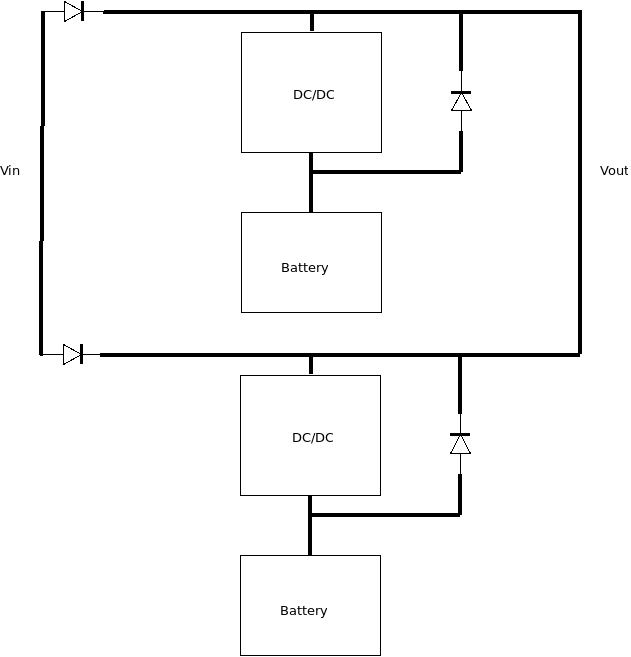We have an application where we have 2 2kWh lithium battery packs which are 48V nominal. I'm looking at using design based on the LM5170-Q1, 2 of to get 4 phases.
The idea is when the main input power is supplied the converters are used as current limited battery chargers controlled by an MCU and when the power is not connected they supply power to the system. The reason to use the controllers for discharge is to manage discharging the packs evenly but controlling the output current, again using the MCU. The diodes around the DC/DC blocks is for when I am switching modes that the system voltage doesn't dip too far, it will only dip to what ever the highest battery voltage is until the DC/DC voltages come up.
The input diode (MOSFETs) is to stop my charge connector being live. If required I can implement the hold up diodes with MOSFETs and make them controllable by the MCU.
The input voltage will be 65V, the boosted battery voltage will be 60V, the maximum battery voltage is 55V. I'm planning on a max input power of 1000W. I need to be able to discharge at 1000W per board as this gives me power redundancy. All downstream converters have an input range of 36-72V.
Is there any reason that this will not work with this part? Will there be any interaction that is bad that will occur from paralleling the two supplies?


